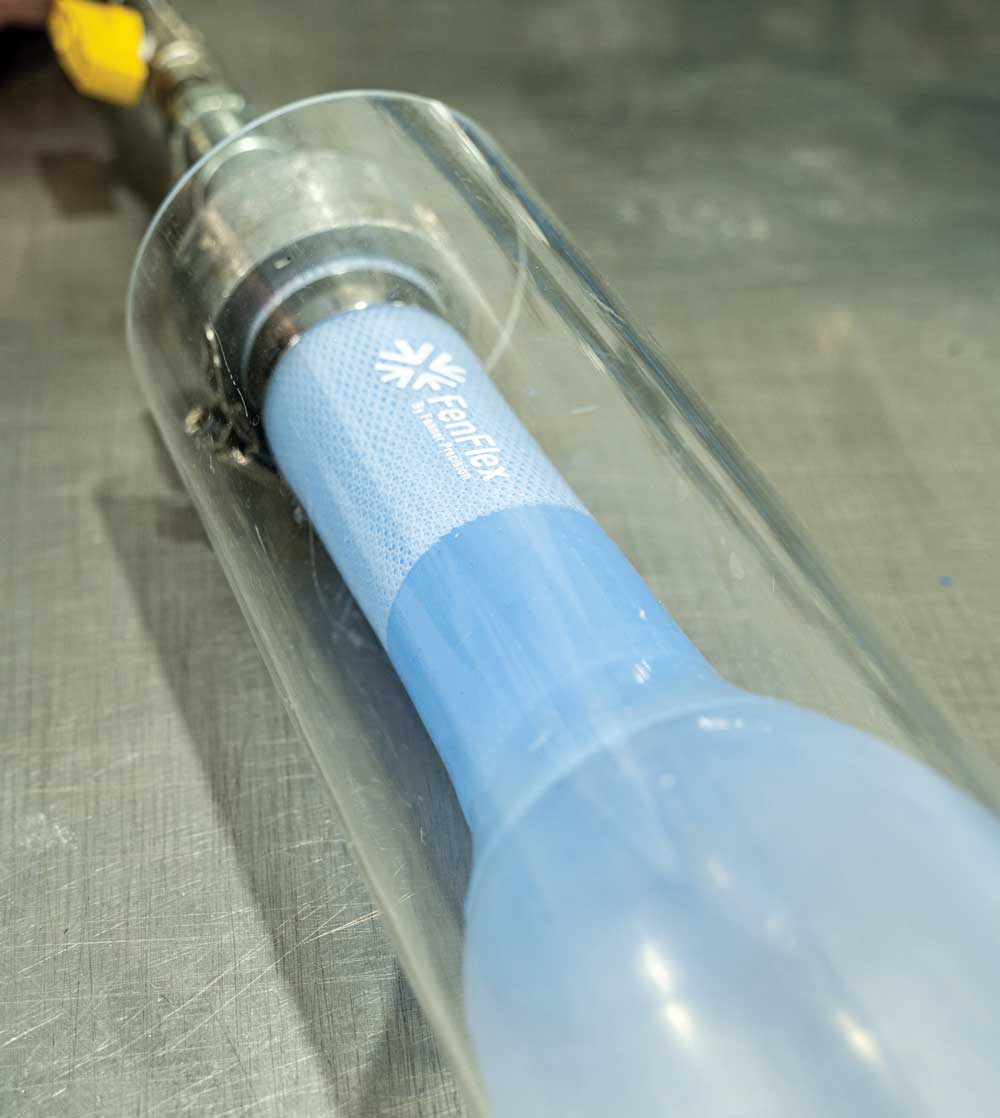
How to ensure you have the right calibration hose for your curing system
This content is sponsored by Fenner Precision Polymers. Sponsored content is authorized by the client and does not necessarily reflect the views of Trenchless Technology or its publisher Benjamin Media Inc.
Surrounded by a busy workspace, not untypical of the stereotype for someone who has emersed himself in the world of silicone and organic rubber applications for over a decade, sits Ethan Smith, Lead Application Engineer for Pipe Rehabilitation at Fenner Precision Polymers UK (FPP UK). Ethan is responsible for overseeing the development and delivery of FPP UK’s range of CIPP pipe rehabilitation products. Whilst trying to take in all the technical drawings, documents and product samples, I notice a bespoke, uniquely carved chess set and, as we begin our conversation, I’m reminded of Einstein’s observation that “if a cluttered desk is a sign of a cluttered mind, of what, then, is an empty desk a sign?”
Ethan, can you start by giving us an overview of what we mean when we’re talking about CIPP pipe rehabilitation products?
Sure. When a pipe system is damaged, say part of a sewer or potable water pipeline, there are essentially two ways of repairing that pipe. Either we dig up the street, which can incur significant costs as well and cause wider disruption, and replace the portion of damaged pipe, or we can adopt a no-dig CIPP method by using a felt or glass liner impregnated with a resin to repair the damaged segment of the pipe. In order for open-ended liners to work effectively, it’s critical that the right calibration hose or bladder is used to help set the liner in place during curing.
And that’s the part of the system that you specialise in?
That’s right. FPP UK specialises in the manufacture of silicone calibration hoses and bladders that work as part of the overall curing system to help deliver optimum flow for pipelines.
Liners can be cured in place using steam, light, hot water and ambient curing methods and are used in conjunction with long length straight hoses, T/Y connection bladders or small packer bladders for patch repair. Our range covers all of these applications and cure methods.

In your experience, which is the best curing method?
Unfortunately, it’s not a case of one size fits all. The chemistry behind each curing system is very different and poses unique challenges. For example, epoxy, polyester and silicate are used for non-UV/LED applications because they require heat to activate the catalyst in the resin, which takes longer to cure but has minimal shrinkage. However, vinylester resin is used for UV/LED applications because it requires light to activate the catalyst, this is much quicker to cure but has a higher shrinkage.
Aside from the curing method, what are the other factors that affect the calibration hose or bladder?
The most important factor is the type of system our customers are using. This will dictate if the hose or bladder needs to be translucent or not in the first instance. Another common consideration is the customer’s stretch requirements. This can create an attribute trade-off as a 2-ply fabric reinforced hose will deliver lower stretch than the single-ply but will be more robust which is important during the removal of the hose post-curing. My team and I work very closely with our customers to understand the attributes that are most critical to them and optimise our bladders and hoses around their unique system needs.
Finally, where do you stand on the issue of reusable silicone versus disposable PVC bladders and calibration hoses?
I’m sure there may be some instances where a disposable might be the preferred option, however, silicone hoses offer far superior temperature resistance, up to 200°C, compared with between 80°C to 100°C for PVC hoses. PVC hoses also offer virtually no stretch whereas some of our silicone hoses can stretch up to 150% making them suitable for multiple pipe diameters while helping to expel liner wrinkles and deliver maximum pipe flow. Finally, PVC hoses are generally much thinner than silicone alternatives making them much more prone to tears. So, in all, I think silicone hoses and packers are far better suited to the robust operational environment of no-dig pipe rehabilitation.
To find out more about the Fenner Precision Polymers pipe rehabilitation range, visit: www.fennerprecision.com




